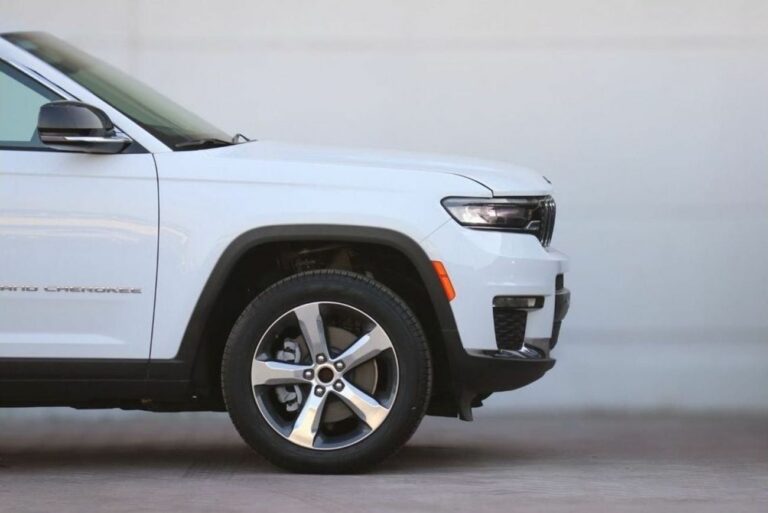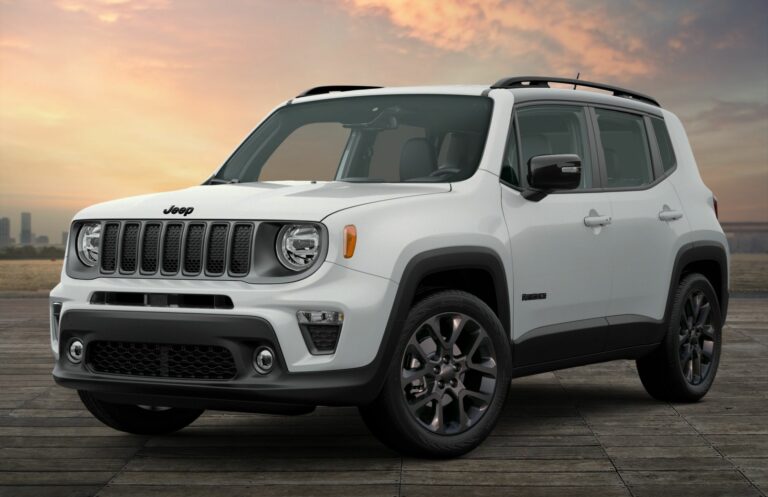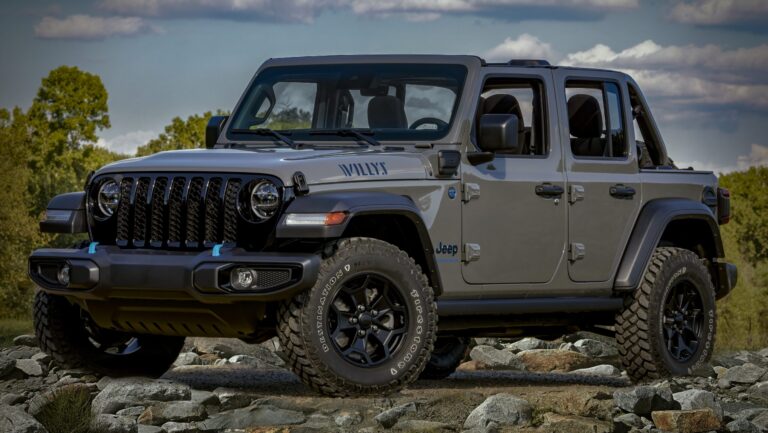2014 SRT8 Jeep HP: Unlocking the Beast Within
2014 SRT8 Jeep HP: Unlocking the Beast Within jeeps.truckstrend.com
The 2014 Jeep Grand Cherokee SRT8 stands as a monument to American performance engineering. More than just an SUV, it’s a high-performance machine designed to thrill, blending family utility with sports car-rivalling acceleration. At its heart lies the formidable 6.4L naturally aspirated HEMI V8 engine, and its stock horsepower figure of 470 HP is impressive by any measure. However, for a dedicated cadre of enthusiasts, "impressive" is merely a starting point. This article delves deep into the world of the 2014 SRT8 Jeep’s horsepower, exploring its baseline capabilities and, more importantly, the myriad ways owners can unlock even greater power, transforming an already potent vehicle into an absolute street and track monster. Whether you’re a curious owner, a prospective buyer, or simply a performance aficionado, understanding the potential for increasing the 2014 SRT8’s horsepower is key to appreciating this modern classic.
The Stock Powerhouse: A Baseline Understanding
2014 SRT8 Jeep HP: Unlocking the Beast Within
Before we discuss boosting power, it’s crucial to understand the foundation. The 2014 Jeep Grand Cherokee SRT8 (part of the WK2 generation) is equipped with a specific iteration of the legendary HEMI engine: the 6.4-liter (392 cubic inch) naturally aspirated V8.
- Engine: 6.4L (392 cu in) naturally aspirated HEMI V8
- Stock Horsepower (HP): 470 hp @ 6,000 rpm
- Stock Torque (LB-FT): 465 lb-ft @ 4,300 rpm
- Transmission: 8-speed automatic (ZF 8HP70)
- Drivetrain: Quadra-Trac Active On-Demand 4WD
- Performance Metrics (Stock):

- 0-60 mph: Approximately 4.8 seconds
- Quarter-Mile: Low 13-second range
- Top Speed: Electronically limited to 160 mph (257 km/h)

These figures made the 2014 SRT8 one of the fastest production SUVs in the world at its release. Its power delivery is linear and strong, accompanied by an intoxicating exhaust note. The vehicle’s intelligent all-wheel-drive system ensures excellent traction, allowing it to put its power down effectively. Despite its considerable curb weight, the SRT8 feels nimble and responsive, thanks to its performance-tuned suspension and Brembo brakes. For many, the stock power is more than sufficient for exhilarating daily driving and occasional track days. Yet, the robust nature of the 392 HEMI engine and the inherent desire for "more" among performance enthusiasts make it an ideal candidate for further power enhancements.
Fundamental Principles of Horsepower Enhancement
To increase an engine’s horsepower, you fundamentally need to enable it to burn more fuel and air more efficiently. This involves optimizing the "air in, air out" process, along with precise fuel delivery and ignition timing. Broadly, performance modifications fall into a few key categories:
- Improved Airflow (Intake & Exhaust): Reducing restrictions in the path of air entering and exiting the engine.
- Optimized Engine Management (Tuning): Calibrating the engine’s computer (ECU) to take advantage of hardware changes and maximize power safely.
- Forced Induction: Compressing air before it enters the engine, effectively forcing more air into the cylinders. This is the most significant way to increase power.
- Internal Engine Upgrades: Strengthening components to withstand higher power levels or optimizing internal efficiency.

Stage 1: Bolt-On Enhancements for Incremental Gains
For those looking for a noticeable bump in power without delving into major engine work, bolt-on modifications offer excellent value and relatively straightforward installation.
-
Cold Air Intakes (CAI):
- How it Works: Replaces the restrictive factory airbox with a less restrictive filter and tubing, drawing cooler, denser air from outside the engine bay. Cooler air contains more oxygen, leading to more power.
- Benefits: Typically adds 5-15 horsepower, improves throttle response, and often enhances engine sound.
- Considerations: Relatively inexpensive, easy to install. Ensure it’s a quality, properly sealed unit to prevent hot engine bay air ingestion.
-
Cat-Back Exhaust Systems:
- How it Works: Replaces the factory exhaust system from the catalytic converters back, often using larger diameter piping, less restrictive mufflers, and sometimes X-pipes or H-pipes.
- Benefits: Can yield 10-25 horsepower, significantly improves exhaust note (louder, deeper, more aggressive), and reduces weight.
- Considerations: Sound preference (some systems can have drone at certain RPMs), legality (check local noise ordinances), and cost varies widely.
-
Headers (Shorty vs. Long Tube):
- How it Works: Replaces the restrictive factory exhaust manifolds with more efficient tubular headers, allowing exhaust gases to exit the cylinders more freely.
- Benefits: Can add 15-30 horsepower. Long tube headers generally offer more significant gains but are more complex to install and may require custom exhaust fabrication. Shorty headers are a direct bolt-on.
- Considerations: Costlier than cat-backs, installation can be labor-intensive. Long tube headers may eliminate catalytic converters, making them illegal for street use in some regions.
-
Performance Tune/ECU Flash:
- How it Works: Modifies the engine’s computer (ECU) parameters, such as fuel delivery, ignition timing, throttle response, and transmission shift points, to optimize performance for the installed hardware.
- Benefits: Crucial for maximizing gains from any bolt-on modification. Can add 20-40+ horsepower on its own, even more when combined with intake and exhaust. Improves drivability and responsiveness.
- Considerations: Requires specialized software and expertise. Custom dyno tunes are generally superior to off-the-shelf tunes. It’s essential to work with a reputable tuner to ensure engine safety.
Practical Advice for Stage 1: Start with a high-quality cold air intake and a cat-back exhaust system. Follow this with a custom tune that optimizes the engine for these modifications. This combination offers a noticeable power bump (often pushing into the 500-540 HP range) and a much more engaging driving experience without significant mechanical risk.
Stage 2: Forced Induction – The Path to Serious Power
For those craving truly significant power increases, forced induction is the ultimate solution. This involves adding a device that compresses air and forces it into the engine, dramatically increasing the amount of air/fuel mixture that can be burned.
-
Superchargers:
- How it Works: A mechanical air compressor driven by the engine’s crankshaft via a belt. It provides instant, linear power delivery.
- Types:
- Roots/Twin-Screw: Positive displacement superchargers that deliver boost almost immediately off idle. Excellent for low-end torque.
- Centrifugal: Operates more like a turbocharger, building boost as engine RPMs increase. Offers a more linear power curve, similar to a larger naturally aspirated engine.
- Benefits: Significant horsepower gains (typically 150-300+ HP over stock, pushing total output well over 700 HP). Instant throttle response.
- Typical HP Gains (with supporting mods): 650-800+ HP at the crank.
- Considerations: High initial cost (kit plus installation), requires substantial supporting modifications, adds weight.
-
Turbochargers:
- How it Works: Uses exhaust gases to spin a turbine, which in turn spins a compressor, forcing air into the engine. Can be single or twin-turbo setups.
- Benefits: Potentially higher peak power than superchargers, more efficient at higher RPMs.
- Typical HP Gains (with supporting mods): 700-900+ HP at the crank.
- Considerations: Turbo lag (delay in boost delivery, though minimized with modern turbos), complex plumbing and heat management, typically more expensive and labor-intensive to install than superchargers.
Important Considerations for Forced Induction (and High-HP Builds):
- Fuel System Upgrades: The stock fuel system cannot deliver enough fuel for significantly increased horsepower. Larger fuel injectors, a higher-capacity fuel pump, and sometimes a new fuel rail are mandatory.
- Cooling System Upgrades: Forced induction generates more heat. An upgraded intercooler (to cool the compressed air), a larger radiator, and potentially an auxiliary oil cooler are highly recommended to maintain reliability.
- Transmission Reinforcement: The ZF 8HP70 is a robust transmission, but it has limits. For power levels exceeding 700-750 HP, a performance valve body, upgraded torque converter, or even a full transmission rebuild with stronger components becomes necessary to prevent slippage and failure.
- Drivetrain Reinforcement: Axles, driveshafts, and differentials can become weak points at very high power levels, especially with sticky tires and aggressive launches.
- Engine Internals: While the 392 HEMI is strong, pushing beyond 750-800 HP reliably often necessitates forged pistons, connecting rods, and sometimes a stronger crankshaft. This is a "built engine" and significantly increases cost and complexity.
- Professional Installation & Tuning: This cannot be stressed enough. Forced induction kits are complex. Proper installation and, critically, a meticulous custom dyno tune by an experienced professional are absolutely vital for engine longevity and optimal performance.
Beyond the Engine: Supporting Modifications
Increased power demands corresponding upgrades in other areas of the vehicle for safety, reliability, and drivability.
- Brakes: With more power comes the need for more stopping power. Upgraded pads, rotors, and even larger caliper kits (like aftermarket Brembo or Wilwood systems) are crucial.
- Suspension: To handle the increased speed and cornering forces, performance lowering springs, coilovers, and upgraded sway bars can dramatically improve handling and reduce body roll.
- Tires: Performance tires with a higher speed rating and stickier compound are essential to put the power to the ground effectively and safely. All-season tires will quickly be overwhelmed.
- Drivetrain Reinforcement: As mentioned, axles, driveshafts, and potentially the differential may need upgrading to handle extreme torque.
Challenges and Considerations for High-HP Builds
Embarking on a high-horsepower build for your 2014 SRT8 Jeep is an exciting endeavor, but it comes with several challenges:
- Reliability vs. Power: There’s an inverse relationship. The more power you chase, the more you push components to their limits, potentially reducing long-term reliability.
- Cost Escalation: Performance modifications are expensive. Forced induction kits alone can range from $8,000 to $15,000+, not including installation, tuning, and critical supporting modifications. Achieving 800+ HP can easily push total costs into the $30,000 – $60,000+ range.
- Legality and Emissions: Many performance parts, especially those that alter the exhaust or engine’s emissions controls (like deleting catalytic converters), may not be street legal in all states or countries. Check local regulations.
- Increased Maintenance: High-horsepower engines often require more frequent and specialized maintenance, including oil changes, spark plug replacements, and general inspections.
- Finding Reputable Shops: This is paramount. A botched installation or a poor tune can quickly lead to catastrophic engine failure. Research shops thoroughly, check reviews, and ask for references.
- Insurance: Informing your insurance company about significant modifications is advisable, as they may affect your policy or premiums.
Practical Advice and Actionable Insights
- Define Your Goals & Budget: Before buying a single part, decide how much power you truly want and how much you’re willing to spend. Be realistic. High horsepower equals high cost.
- Research, Research, Research: Join online forums, read reviews, and talk to other SRT8 owners who have gone down the modification path. Learn from their experiences.
- Choose Reputable Parts & Shops: Don’t cut corners on quality. Invest in proven components from well-known manufacturers and trust your vehicle only to experienced, specialized performance shops.
- Prioritize Tuning: A good tune is the single most important factor for a reliable and powerful modified engine. Do not skimp here.
- Don’t Skip Supporting Mods: Brakes, tires, and transmission upgrades are not optional extras for high-horsepower builds; they are necessities for safety and longevity.
- Understand the Risks: Modifying an engine, especially with forced induction, inherently increases the risk of mechanical failure. Be prepared for potential issues and unexpected costs.
- Enjoy the Process: Building a high-performance vehicle is a journey. Celebrate the milestones and enjoy the incredible performance your modified 2014 SRT8 Jeep will deliver.
Estimated Price Table for 2014 SRT8 Jeep HP Upgrades
Please note that these are estimated costs and can vary significantly based on brand, quality of parts, labor rates, regional differences, and specific shop pricing. "Installed & Tuned" costs include parts, labor, and a custom dyno tune.
| Modification/Power Level | Estimated HP Gain (Over Stock) | Total Estimated HP | Estimated Cost (Parts Only) | Estimated Cost (Installed & Tuned) | Notes & Required Upgrades |
|---|---|---|---|---|---|
| Stock | N/A | 470 HP | N/A | N/A | Baseline performance. |
| Stage 1: Bolt-Ons & Tune | 30-70 HP | 500-540 HP | $1,500 – $4,000 | $2,500 – $6,000 | Cold Air Intake, Cat-back Exhaust, Performance Tune (Headers optional) |
| Stage 2: Entry-Level Forced Induction | 150-250 HP | 620-720 HP | $8,000 – $15,000 | $12,000 – $25,000 | Supercharger Kit, Upgraded Fuel System (Injectors, Pump), Custom Tune |
| Stage 3: High-HP Forced Induction (Street) | 250-400+ HP | 720-870+ HP | $15,000 – $30,000+ | $25,000 – $50,000+ | Larger Supercharger/Turbo, Advanced Fuel System, Upgraded Cooling, Transmission Upgrades (Valve Body, Torque Converter) |
| Extreme Build (Built Engine & Race) | 400-600+ HP | 870-1070+ HP | $30,000 – $60,000+ | $50,000 – $100,000+ | Forged Internals (Pistons, Rods, Crank), High-Flow Heads, Custom Cam, Twin Turbos, Full Transmission & Drivetrain Reinforcement, Safety Equipment |
Frequently Asked Questions (FAQ)
Q1: What is the stock HP of the 2014 SRT8 Jeep?
A1: The 2014 Jeep Grand Cherokee SRT8 comes with a stock horsepower of 470 HP from its 6.4L (392 cu in) naturally aspirated HEMI V8 engine.
Q2: Is it safe to supercharge a 2014 SRT8?
A2: Yes, it is generally safe to supercharge a 2014 SRT8, provided the installation is professional, the engine is properly tuned, and necessary supporting modifications (fuel system, cooling) are in place. The 392 HEMI is a robust engine, but exceeding 700-750 HP reliably often requires transmission upgrades, and over 800 HP typically necessitates forged internal engine components.
Q3: What’s the most power I can make on the stock engine internals?
A3: While some have pushed stock internal 392 HEMIs with forced induction to 700-750 HP at the crank, this is generally considered the upper limit for reliable long-term use. Beyond this, forged pistons, rods, and possibly a stronger crankshaft are highly recommended.
Q4: How much does it cost to supercharge a 2014 SRT8?
A4: The cost can vary widely. A supercharger kit alone might range from $8,000 to $15,000. Including installation, tuning, and essential supporting modifications (fuel system, cooling), you can expect total costs to be in the range of $12,000 to $25,000 for a reliable, streetable setup. Higher power goals will increase the cost significantly.
Q5: Will modifications void my warranty?
A5: Yes, most significant performance modifications, especially forced induction or internal engine work, will typically void your factory powertrain warranty. Some aftermarket parts manufacturers offer their own limited warranties.
Q6: Do I need to upgrade the transmission for more power?
A6: For modest gains (e.g., bolt-ons and tune, up to 550 HP), the stock 8-speed ZF transmission is usually sufficient. However, once you add forced induction and exceed around 700-750 HP, upgrading the transmission’s valve body, torque converter, or even a full rebuild with stronger components is highly recommended to prevent premature failure.
Q7: Where can I find reputable shops for SRT8 modifications?
A7: Look for performance shops specializing in HEMI engines or Mopar vehicles. Online forums (e.g., SRT Hellcat Forum, Grand Cherokee SRT8 forums) are excellent resources for recommendations and reviews of shops in your area. Always check references and ask to see examples of their work.
Conclusion
The 2014 Jeep Grand Cherokee SRT8 is an extraordinary vehicle, even in its stock form, offering a compelling blend of utility and raw power. Its 470 HP output is a testament to its performance heritage. However, for those who crave an even more exhilarating experience, the potential for horsepower enhancement is immense. From simple bolt-ons that push the 500 HP mark to radical forced induction builds that can shatter the 1000 HP barrier, the 2014 SRT8 provides a robust platform for customization.
While the journey of increasing horsepower can be costly and complex, the rewards – a truly unique, breathtakingly fast SUV – are undeniable. By understanding the principles, planning carefully, investing in quality parts, and entrusting your vehicle to experienced professionals, you can safely unlock the true beast within your 2014 SRT8 Jeep, transforming it into a performance icon that commands respect on any road or track.





